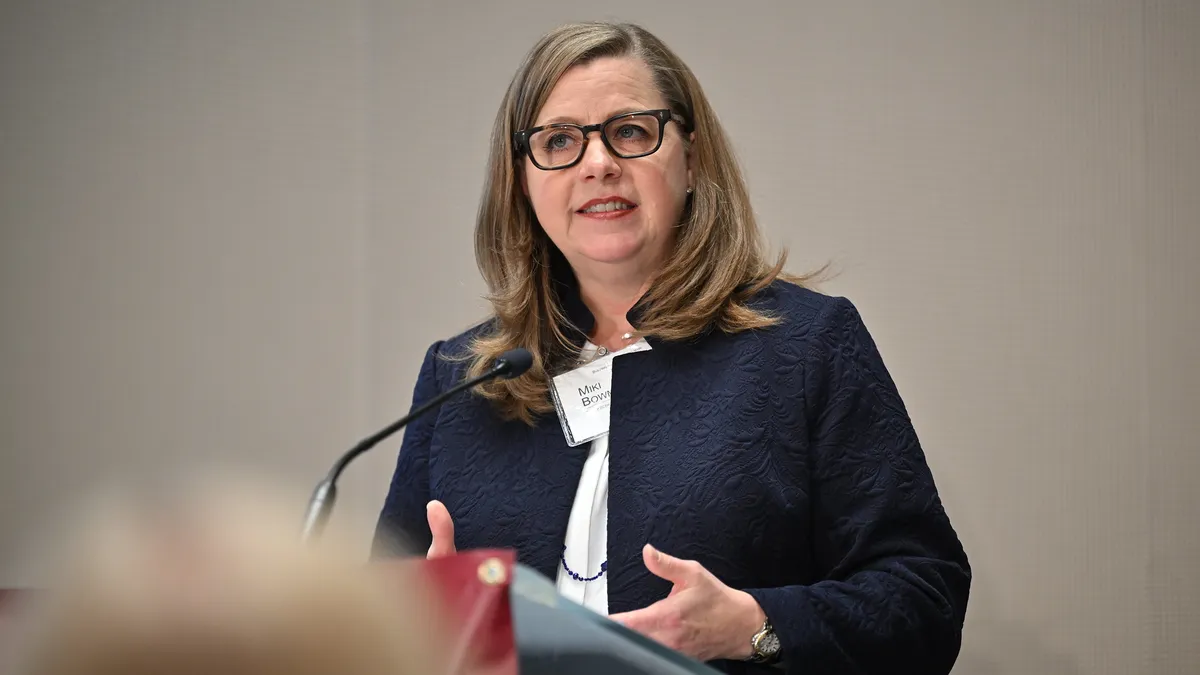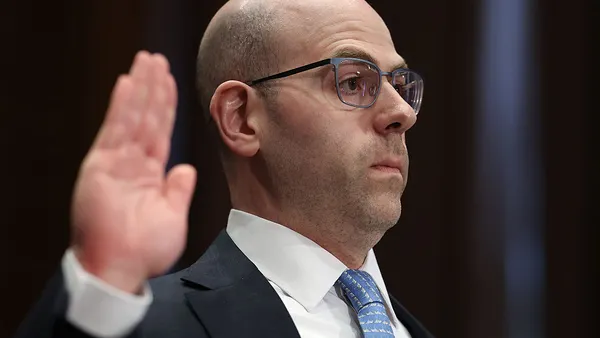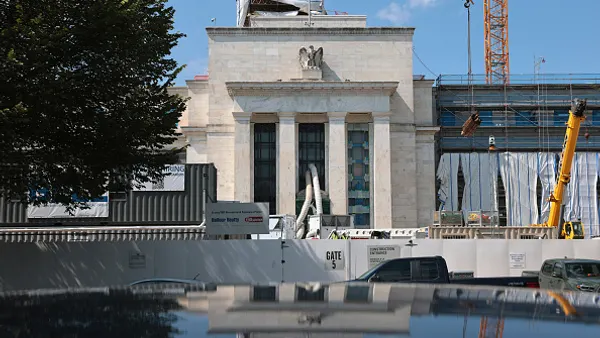Dive Brief:
- The Supreme Court last week exempted the Federal Reserve from its order granting the Trump administration’s emergency request to uphold the firing of officials at the National Labor Relations Board and the Merit Systems Protection Board.
- The Fed “is a uniquely structured, quasi-private entity that follows in the distinct historical tradition of the First and Second Banks of the United States,” the majority wrote in Thursday’s order.
- Justice Elena Kagan, joined in a dissenting opinion by Justices Sonia Sotomayor and Ketanji Brown Jackson, called the Fed exception “out of the blue,” saying she was “glad to hear it, and do not doubt the majority’s intention to avoid imperiling the Fed.” But the exemption “poses a puzzle,” because Fed independence “rests on the same constitutional and analytic foundations” as other federal agencies, Kagan said.
Dive Insight:
The Justice Department had asked for a stay on a D.C. Circuit Court order reinstating Gwynne Wilcox of the NLRB and Cathy Harris of the MSPB, both Democrats appointed by former President Joe Biden, after President Donald Trump removed them without cause earlier this year.
While the case proceeds, the Supreme Court’s order allows Wilcox and Harris’ firings to stand – a move lower courts had blocked, citing precedent from Humphrey’s Executor v. United States.
In that 1935 case, the Supreme Court determined the president couldn’t oust commission members before their terms expire, except for malfeasance or dereliction of duty.
Fed governors, nominated by the president and confirmed by the Senate, serve 14-year terms, and Humphrey’s undergirds the independence of the Fed, said Kathryn Judge, a Columbia University professor of law. Last week’s decision suggests the court is poised to overturn or gut that precedent based on “a very expansive reading of the nature of the executive power” that Article II of the Constitution gives the president, she said.
The Supreme Court majority wrote that the stay of a district court’s injunction “reflects our judgment that the Government is likely to show that both the NLRB and MSPB exercise considerable executive power,” and the president “may remove without cause executive officers who exercise that power on his behalf.”
Judge said the majority “seems rightly fearful of the practical ramifications of undermining the central bank's independence. But in trying to placate markets by suggesting it will create an exception for the Federal Reserve, it also revealed how difficult it will be for the Court to devise a principled basis for distinguishing the Fed from other independent agencies.”
In her dissent, Kagan lambasted the decision to create “a bespoke Federal Reserve exception” and the convoluted reasoning it required. “If the idea is to reassure the markets, a simpler — and more judicial — approach would have been to deny the President’s application for a stay on the continued authority of Humphrey’s,” she wrote.
Even before Trump returned to the White House, questions circulated as to whether he would attempt to or could fire Fed Chair Jerome Powell, who the president was critical of during his first term. Powell indicated last month the Fed was closely monitoring the court case, although he didn’t think the court’s ruling in the case would apply to the Fed, Bloomberg reported.
In November, Powell said such a move is “not permitted under the law,” and he would not resign if Trump asked. His term as chair of the central bank expires in May 2026. Trump has waffled on his intentions to remove Powell, saying in April he never intended to fire the Fed chair. But he hasn’t held back his criticism of Powell, who he has blasted repeatedly for not cutting interest rates.
Lev Menand, a Columbia University law professor, called the Supreme Court majority’s single-sentence reasoning related to the Fed “threadbare and incoherent.”
“The more one looks at the Federal Reserve Board, the harder it is to escape the conclusion that there is no way to distinguish the Board from the other multimember commissions on which it is based,” he wrote in a white paper Friday.
If there’s an exemption for the Fed, “then the justices need to identify where in the Constitution it says there is a different set of rules for the exercise of executive power over banks,” Menand wrote. “Because, at the end of the day, that is what the Federal Reserve Board is: a bank regulator.”
The Supreme Court’s decision last week “does not bode well” for the lawsuit filed by Todd Harper and Tanya Otsuka, the Democratic members of the National Credit Union Administration Trump fired in April, Judge said. That move left just one member on the regulator’s board: Republican Chair Kyle Hauptman. Harper and Otsuka sued the president over what they called their “patently unlawful removal[s].”
Harper indicated earlier this month that he viewed the firings as part of a broader Trump administration strategy ultimately targeting the Federal Reserve, and reflective of a desire to dismantle independence held by federal financial regulators.
“There are strong arguments, based on the statutory scheme and the Supreme Court's traditional approach to separation of powers, that President Trump lacked the authority to remove them,” Judge said of Harper and Otsuka’s case. “The recent decision, however, makes it far less likely that they will prevail on the merits.”
The majority deemed the stay appropriate “to avoid the disruptive effect of the repeated removal and reinstatement of officers” while the case proceeds, and said a final decision on the NLRB and MSPB is better made after full briefing and argument.













